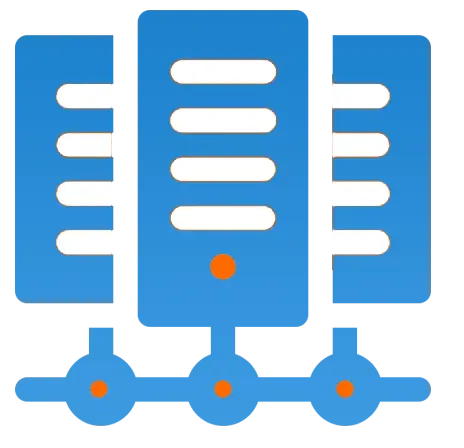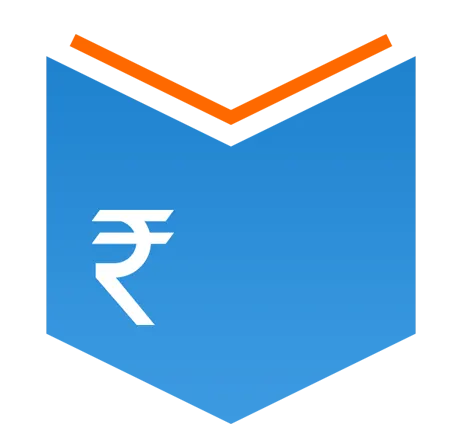Get 69% Off on Cloud Hosting : Claim Your Offer Now!
- Products
-
Compute
Compute
- Predefined TemplatesChoose from a library of predefined templates to deploy virtual machines!
- Custom TemplatesUse Cyfuture Cloud custom templates to create new VMs in a cloud computing environment
- Spot Machines/ Machines on Flex ModelAffordable compute instances suitable for batch jobs and fault-tolerant workloads.
- Shielded ComputingProtect enterprise workloads from threats like remote attacks, privilege escalation, and malicious insiders with Shielded Computing
- GPU CloudGet access to graphics processing units (GPUs) through a Cyfuture cloud infrastructure
- vAppsHost applications and services, or create a test or development environment with Cyfuture Cloud vApps, powered by VMware
- Serverless ComputingNo need to worry about provisioning or managing servers, switch to Serverless Computing with Cyfuture Cloud
- HPCHigh-Performance Computing
- BaremetalBare metal refers to a type of cloud computing service that provides access to dedicated physical servers, rather than virtualized servers.
-
Storage
Storage
- Standard StorageGet access to low-latency access to data and a high level of reliability with Cyfuture Cloud standard storage service
- Nearline StorageStore data at a lower cost without compromising on the level of availability with Nearline
- Coldline StorageStore infrequently used data at low cost with Cyfuture Cloud coldline storage
- Archival StorageStore data in a long-term, durable manner with Cyfuture Cloud archival storage service
-
Database
Database
- MS SQLStore and manage a wide range of applications with Cyfuture Cloud MS SQL
- MariaDBStore and manage data with the cloud with enhanced speed and reliability
- MongoDBNow, store and manage large amounts of data in the cloud with Cyfuture Cloud MongoDB
- Redis CacheStore and retrieve large amounts of data quickly with Cyfuture Cloud Redis Cache
-
Automation
Automation
-
Containers
Containers
- KubernetesNow deploy and manage your applications more efficiently and effectively with the Cyfuture Cloud Kubernetes service
- MicroservicesDesign a cloud application that is multilingual, easily scalable, easy to maintain and deploy, highly available, and minimizes failures using Cyfuture Cloud microservices
-
Operations
Operations
- Real-time Monitoring & Logging ServicesMonitor & track the performance of your applications with real-time monitoring & logging services offered by Cyfuture Cloud
- Infra-maintenance & OptimizationEnsure that your organization is functioning properly with Cyfuture Cloud
- Application Performance ServiceOptimize the performance of your applications over cloud with us
- Database Performance ServiceOptimize the performance of databases over the cloud with us
- Security Managed ServiceProtect your systems and data from security threats with us!
- Back-up As a ServiceStore and manage backups of data in the cloud with Cyfuture Cloud Backup as a Service
- Data Back-up & RestoreStore and manage backups of your data in the cloud with us
- Remote Back-upStore and manage backups in the cloud with remote backup service with Cyfuture Cloud
- Disaster RecoveryStore copies of your data and applications in the cloud and use them to recover in the event of a disaster with the disaster recovery service offered by us
-
Networking
Networking
- Load BalancerEnsure that applications deployed across cloud environments are available, secure, and responsive with an easy, modern approach to load balancing
- Virtual Data CenterNo need to build and maintain a physical data center. It’s time for the virtual data center
- Private LinkPrivate Link is a service offered by Cyfuture Cloud that enables businesses to securely connect their on-premises network to Cyfuture Cloud's network over a private network connection
- Private CircuitGain a high level of security and privacy with private circuits
- VPN GatewaySecurely connect your on-premises network to our network over the internet with VPN Gateway
- CDNGet high availability and performance by distributing the service spatially relative to end users with CDN
-
Media
-
Analytics
Analytics
-
Security
Security
-
Network Firewall
- DNATTranslate destination IP address when connecting from public IP address to a private IP address with DNAT
- SNATWith SNAT, allow traffic from a private network to go to the internet
- WAFProtect your applications from any malicious activity with Cyfuture Cloud WAF service
- DDoSSave your organization from DoSS attacks with Cyfuture Cloud
- IPS/ IDSMonitor and prevent your cloud-based network & infrastructure with IPS/ IDS service by Cyfuture Cloud
- Anti-Virus & Anti-MalwareProtect your cloud-based network & infrastructure with antivirus and antimalware services by Cyfuture Cloud
- Threat EmulationTest the effectiveness of cloud security system with Cyfuture Cloud threat emulation service
- SIEM & SOARMonitor and respond to security threats with SIEM & SOAR services offered by Cyfuture Cloud
- Multi-Factor AuthenticationNow provide an additional layer of security to prevent unauthorized users from accessing your cloud account, even when the password has been stolen!
- SSLSecure data transmission over web browsers with SSL service offered by Cyfuture Cloud
- Threat Detection/ Zero DayThreat detection and zero-day protection are security features that are offered by Cyfuture Cloud as a part of its security offerings
- Vulnerability AssesmentIdentify and analyze vulnerabilities and weaknesses with the Vulnerability Assessment service offered by Cyfuture Cloud
- Penetration TestingIdentify and analyze vulnerabilities and weaknesses with the Penetration Testing service offered by Cyfuture Cloud
- Cloud Key ManagementSecure storage, management, and use of cryptographic keys within a cloud environment with Cloud Key Management
- Cloud Security Posture Management serviceWith Cyfuture Cloud, you get continuous cloud security improvements and adaptations to reduce the chances of successful attacks
- Managed HSMProtect sensitive data and meet regulatory requirements for secure data storage and processing.
- Zero TrustEnsure complete security of network connections and devices over the cloud with Zero Trust Service
- IdentityManage and control access to their network resources and applications for your business with Identity service by Cyfuture Cloud
-
-
Compute
- Solutions
-
Solutions
Solutions
-
 Cloud
Hosting
Cloud
Hosting
-
 VPS
Hosting
VPS
Hosting
-
GPU Cloud
-
 Dedicated
Server
Dedicated
Server
-
 Server
Colocation
Server
Colocation
-
 Backup as a Service
Backup as a Service
-
 CDN
Network
CDN
Network
-
 Window
Cloud Hosting
Window
Cloud Hosting
-
 Linux
Cloud Hosting
Linux
Cloud Hosting
-
Managed Cloud Service
-
Storage as a Service
-
 VMware
Public Cloud
VMware
Public Cloud
-
 Multi-Cloud
Hosting
Multi-Cloud
Hosting
-
 Cloud
Server Hosting
Cloud
Server Hosting
-
 Bare
Metal Server
Bare
Metal Server
-
 Virtual
Machine
Virtual
Machine
-
 Magento
Hosting
Magento
Hosting
-
Remote Backup
-
 DevOps
DevOps
-
 Kubernetes
Kubernetes
-
 Cloud
Storage
Cloud
Storage
-
NVMe Hosting
-
 DR
as s Service
DR
as s Service
-
-
Solutions
- Marketplace
- Pricing
- Resources
- Resources
-
By Product
Use Cases
-
By Industry
- Company
-
Company
Company
-
Company
Revolutionizing Industries With Blockchain Protocols
Whether you’re new to blockchain or have been involved for a while, it’s always essential to keep updated with the latest regulations in your area of expertise.
This scenario applies to Blockchain Technology as it is to any other industry.
A Blockchain is a decentralized and distributed digital ledger. This emerging technology is well-known in almost all industries to record secure transactions across many computers.
The blockchain protocol is the set of rules and guidelines that govern how the blockchain operates and the mechanisms that ensure its integrity and security.
According to the PRNewswire report, the blockchain market is estimated to increase rapidly in the next few years, reaching USD 39.7 billion by 2025. It represents a compound annual growth rate (CAGR) of 67.3%, making it one of the fastest-growing industries in the world.
This growth is being driven by increasing interest from businesses and investors, as well as advances in technology that are making blockchain more accessible and user-friendly. With so much potential, now is the time to get involved in the blockchain space.
In this blog, we’ll understand what blockchain protocols are, why we need them, and how they are used in blockchain.
What is a Blockchain Protocol?
A blockchain protocol is a set of rules that govern the operation of a blockchain network. It defines, how transactions are added to the blockchain, how the network reaches consensus on the state of the ledger, and how conflicts and errors are handled by the network.
As already stated, a blockchain is a decentralized and distributed digital ledger that records transactions across many computers.
So that the record cannot be altered backdate without the modification of all upcoming blocks and the consensus of the network.
In other words, it is a perpetually growing list of records, called blocks, which are linked and secured using cryptography.
Each block contains a cryptographic hash that stores information from the previous block, a timestamp, and transaction data. By design, a blockchain is resistant to modification of the data.
It is designed to ensure the security and integrity of the blockchain by using cryptographic techniques and a network of nodes. By validating and recording transactions, it can reach a consensus on the state of the ledger and resolve conflicts and errors.
How Does Blockchain Protocol Work?
The blockchain protocol is a decentralized and distributed digital ledger that records transactions across many computers. This ledger is called the blockchain.
Each transaction on the blockchain is registered as a block, which is added to the existing chain of blocks. These blocks are linked using cryptographic hashes, which ensure the integrity of the blockchain by making it extremely difficult to alter the data within a block.
The blockchain protocol is an innovative way to store and manage data securely. By using cryptographic hashes, it ensures that data cannot be altered without changing the entire chain, which makes it virtually impossible to tamper with.
The blockchain protocol relies on a network of nodes to validate and record transactions. These nodes work together to reach a consensus on the state of the ledger, using mechanisms such as proof-of-work or proof-of-stake.
Once a new block has been added to the blockchain, it becomes a permanent part of the ledger. This makes the blockchain a secure and transparent system for recording and verifying the authenticity of transactions.
The blockchain protocol is a decentralized and secure system that enables the exchange of value and verification of authenticity for digital assets without the need for a central authority.
Here is a step-by-step guide to how the blockchain protocol works:
- A user initiates a transaction request, which could be the transfer of value (e.g. a cryptocurrency) or the execution of a smart contract. The transaction is broadcast to the network of nodes.
- The nodes receive the transaction and verify it, ensuring that it is valid and that the user has the necessary funds or assets to complete the transaction. This process is called “consensus.”
- Once the transaction has been verified, it is added to a block along with other verified transactions. The block also contains a previous block’s timestamp and cryptographic hash.
- The block is then broadcast to the network and added to the blockchain, after being validated and processed by the nodes.
- By using a cryptographic hash the block is linked to the previous block. It ensures the integrity of the blockchain by making it extremely difficult to alter the data within a block.
- The new block becomes a permanent part of the blockchain, and the transaction is complete.
- The network of nodes continues to validate and add new transactions to the blockchain, creating a continually growing chain of blocks.
Overall, the blockchain protocol enables the creation of a decentralized and secure system for exchanging value and verifying the authenticity of digital assets, without the need for a central authority.
Types of Blockchain Protocols:Protocol
Description
Benefits
Bitcoin
It is a decentralized, open-source protocol that uses proof-of-work to validate transactions and add new blocks to the blockchain.
It is the first and most popular blockchain protocol.
It is primarily used for the transfer of value.
- Established and widely accepted
- Highly secure and immutable
- Can be used for the transfer of value and the storage of digital assets
- Transaction fees is low
Ethereum
It is also a decentralized, open-source protocol that uses smart contracts to enable the creation of decentralized applications.
It uses a proof-of-work consensus mechanism, but in the future, it is planning to switch to a proof-of-stake mechanism.
- High level of security and immutability
- Can be used for the transfer of value and the storage of digital assets
- Flexible and programmable
Hyperledger
This open-source protocol was developed by the Linux Foundation specifically for the creation of enterprise-grade blockchain solutions.
It offers a variety of consensus mechanisms and can be customized for various use cases.
- Designed for enterprise use
- Can be customized for various use cases
- High level of security and privacy
- Scalable
Corda
Corda is also an open-source protocol developed for the creation of financial applications.
It uses a unique consensus mechanism called “validating notary,” which allows for high performance and privacy.
- This protocol is designed for financial applications
- Unique consensus the mechanism allows for high performance and privacy
- Can be used for the transfer of value and the storage of digital assets
- Scalable
EOS
This open-source protocol is also a decentralized one.
It uses a proof-of-stake consensus mechanism and a unique governance structure to enable the creation of decentralized applications.
- Enables the creation of decentralized applications
- Fast and scalable
- Transaction fees is low
- Unique governance structure
Ripple
This decentralized, open-source protocol is primarily used for the transfer of value and the settlement of financial transactions.
It uses a unique consensus mechanism called the “Ripple Protocol Consensus Algorithm.”
- It is used for the transfer of value and the settlement of financial transactions
- Fast and scalable
- Low transaction fees
- Widely accepted by financial institutions
Stellar
This protocol is primarily the transfer of value and the settlement of financial transactions.
It uses a unique consensus mechanism called the “Stellar Consensus Protocol.”
- Primarily used for the transfer of value and the settlement of financial transactions
- Fast and scalable
- Low transaction fees
- Widely accepted by financial institutions
- Designed to be interoperable with other blockchain protocols
Bottom line
Blockchain protocols are expanding at a tremendous rate and as a result, new protocols are being developed quickly to meet the demands of every industry, including supply chain, health, banking, cloud services etc.
When it comes to choosing a blockchain protocol for your enterprise application, it’s important to weigh all the options and choose the one that best suits your needs. The protocol you choose will have a big impact on the scope of your development work.
We hope this blog has given you a good overview of the main blockchain protocols currently available. With so many options to choose from, you should be able to find the right protocol for your project.
Recent Post

Stay Ahead of the Curve.
Join the Cloud Movement, today!
© Cyfuture, All rights reserved.
Send this to a friend

 Pricing
Calculator
Pricing
Calculator
 Power
Power
 Utilities
Utilities VMware
Private Cloud
VMware
Private Cloud VMware
on AWS
VMware
on AWS VMware
on Azure
VMware
on Azure Service
Level Agreement
Service
Level Agreement 


















